
- Redux - Home
- Redux - Overview
- Redux - Installation
- Redux - Core Concepts
- Redux - Data Flow
- Redux - Store
- Redux - Actions
- Redux - Pure Functions
- Redux - Reducers
- Redux - Middleware
- Redux - Devtools
- Redux - Testing
- Redux - Integrate React
- Redux - React Example
- Redux Useful Resources
- Redux - Quick Guide
- Redux - Useful Resources
- Redux - Discussion
Redux - React Example
Here is a small example of react and Redux application. You can also try developing small apps. Sample code for increase or decrease counter is given below −
This is the root file which is responsible for the creation of store and rendering our react app component.
/src/index.js import React from 'react' import { render } from 'react-dom' import { Provider } from 'react-redux' import { createStore } from 'redux'; import reducer from '../src/reducer/index' import App from '../src/App' import './index.css'; const store = createStore( reducer, window.__REDUX_DEVTOOLS_EXTENSION__ && window.__REDUX_DEVTOOLS_EXTENSION__() ) render( <Provider store = {store}> <App /> </Provider>, document.getElementById('root') )
This is our root component of react. It is responsible for rendering counter container component as a child.
/src/app.js import React, { Component } from 'react'; import './App.css'; import Counter from '../src/container/appContainer'; class App extends Component { render() { return ( <div className = "App"> <header className = "App-header"> <Counter/> </header> </div> ); } } export default App;
The following is the container component which is responsible for providing Reduxs state to react component −
/container/counterContainer.js import { connect } from 'react-redux' import Counter from '../component/counter' import { increment, decrement, reset } from '../actions'; const mapStateToProps = (state) => { return { counter: state }; }; const mapDispatchToProps = (dispatch) => { return { increment: () => dispatch(increment()), decrement: () => dispatch(decrement()), reset: () => dispatch(reset()) }; }; export default connect(mapStateToProps, mapDispatchToProps)(Counter);
Given below is the react component responsible for view part −
/component/counter.js import React, { Component } from 'react'; class Counter extends Component { render() { const {counter,increment,decrement,reset} = this.props; return ( <div className = "App"> <div>{counter}</div> <div> <button onClick = {increment}>INCREMENT BY 1</button> </div> <div> <button onClick = {decrement}>DECREMENT BY 1</button> </div> <button onClick = {reset}>RESET</button> </div> ); } } export default Counter;
The following are the action creators responsible for creating an action −
/actions/index.js export function increment() { return { type: 'INCREMENT' } } export function decrement() { return { type: 'DECREMENT' } } export function reset() { return { type: 'RESET' } }
Below, we have shown line of code for reducer file which is responsible for updating the state in Redux.
reducer/index.js const reducer = (state = 0, action) => { switch (action.type) { case 'INCREMENT': return state + 1 case 'DECREMENT': return state - 1 case 'RESET' : return 0 default: return state } } export default reducer;
Initially, the app looks as follows −
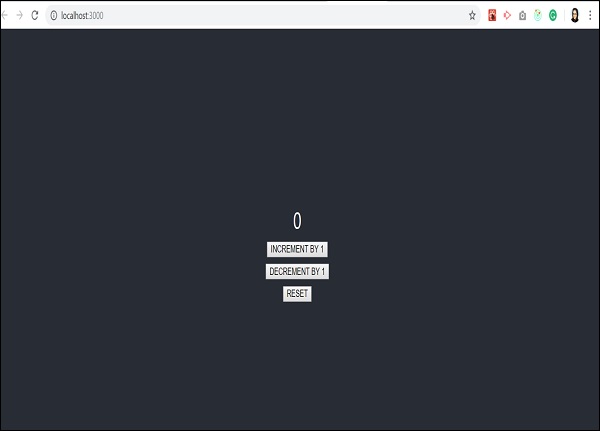
When I click increment two times, the output screen will be as shown below −
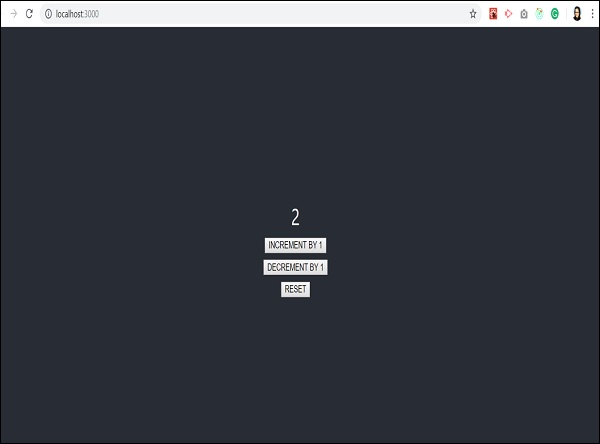
When we decrement it once, it shows the following screen −
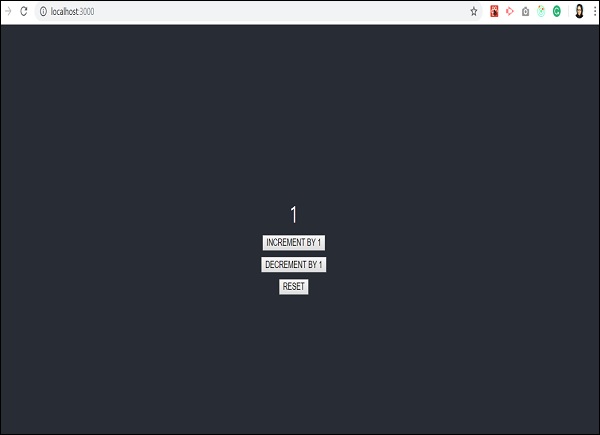
And reset will take the app back to initial state which is counter value 0. This is shown below −
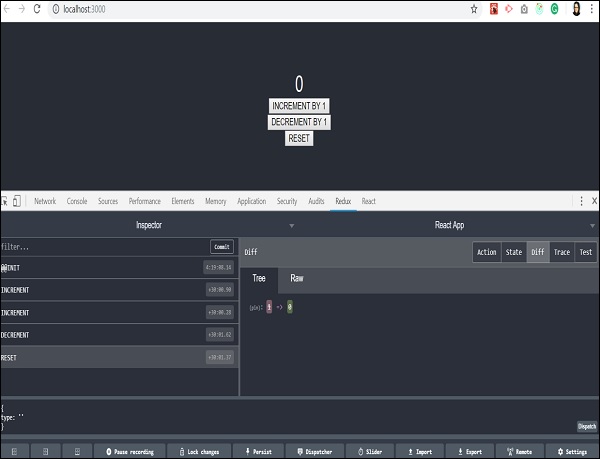
Let us understand what happens with Redux dev tools when the first increment action takes place −
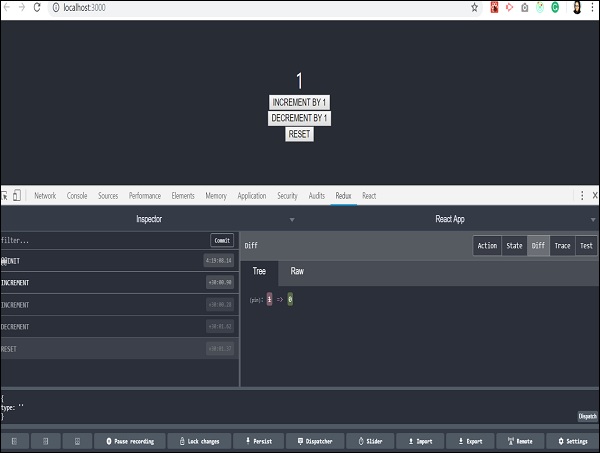
State of the app will be moved to the time when only increment action is dispatched and rest of the actions are skipped.
We encourage to develop a small Todo App as an assignment by yourself and understand the Redux tool better.